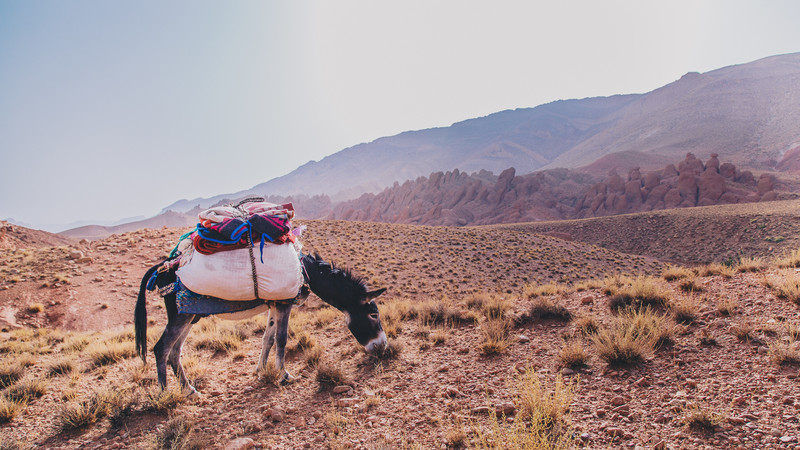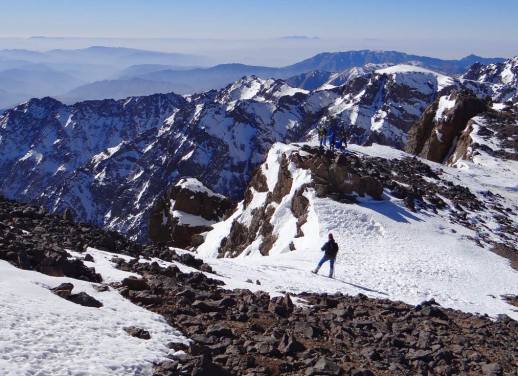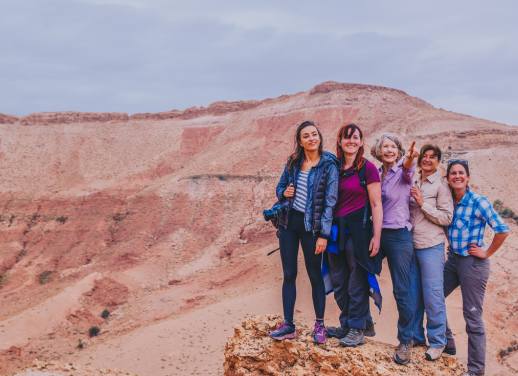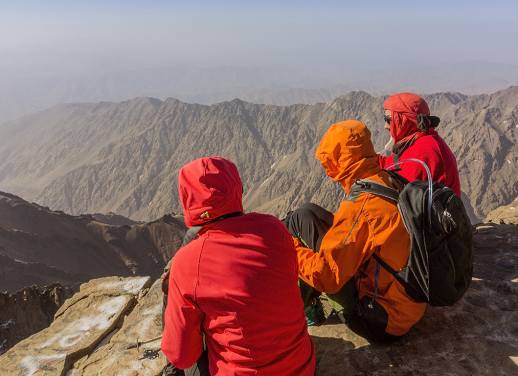In 1975 I was twenty-five years old and had never traveled beyond the borders of North America. One day, I got it into my head that I wanted to tour Morocco.
A few months later my new husband and I were singing “Marrakech Express” at the top of our lungs in a shiny blue Renault. We were traversing the mountains and deserts of Morocco on a journey that would take us through Casablanca, Rabat, Meknes, and Fes, along the undulating ribbon of freshly paved highway that connected them all to the oasis of Marrakech.
Fast forward to 2017. Intrepid Travel’s Walking With Berber Nomads trip appeared in my Facebook feed. Whoosh! Suddenly I could hear the muezzin’s call to prayer, smell the spices in the medina, and feel the breeze lifting my hair off the back of my neck on the Barbary Coast. I signed up the very next day.
I had thought of Morocco over the years, and I wanted to see if Morocco in the digital age had managed to remain the kind, eager-to-please country I remembered so vividly.
RELATED: THE ART OF DISCONNECTING: LEARNINGS FROM A MOROCCAN MOUNTAIN EXPEDITION
You are welcome in our city
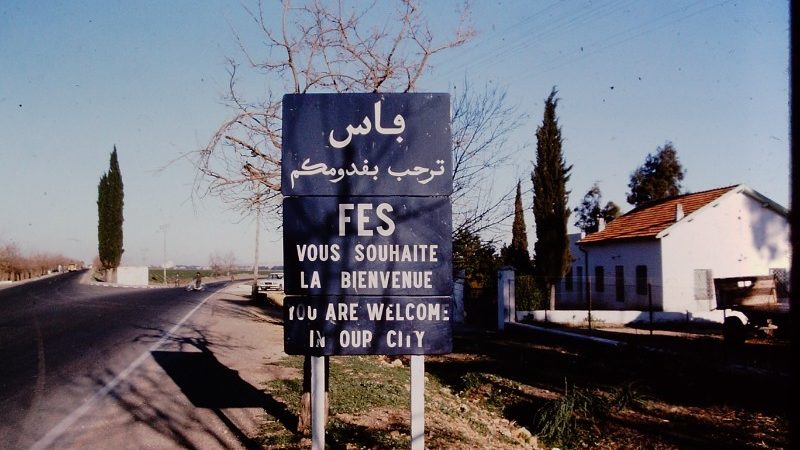
You are welcome in our city
This sign on the outskirts of Fes remains my most enduring memory of 1975 Morocco.
See the young man on the motor scooter in the distance? He offered – undoubtedly in the employ of the hotel – to lead us to a reasonably priced guesthouse, petite dejuener included. We followed, and it was lovely. Tiled floors and a balcony overlooking the city, upstairs from a French bakery. Merci beaucoup. At the time, Arabic and French were the prevalent languages.
In those days before Trip Advisor, we traveled unencumbered by reviews. It may have been naive, but times were different. We never met another traveler on that trip and, once we were outside the cities, didn’t see another car. No wonder Jimi Hendrix was hiding out there. We did chat with some Peace Corps volunteers in Rabat whom we recognized as Americans by the Clarks Wallabies on their feet.
SUBSCRIBE TO INTREPID’S NEWSLETTER FOR TRAVEL TIPS, COMPETITIONS, GIVEAWAYS & MORE
Returning to Morocco after 42 years
In contrast to the few lodgings in 1975, today there are over a thousand hotels of all sizes – mostly in the cities – in a country the size of California. Frankly, other than these small differences, the countryside we experienced during our Walking With Berber Nomads trip remains very much the same beautiful, undeveloped landscape that I recall.
The ‘guinea pig’ group
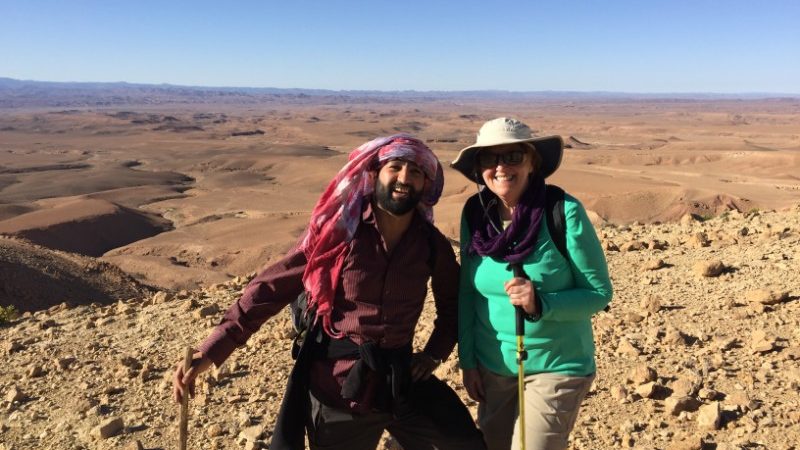
Linda and Abdellah
The twelve of us arrived in Marrakech from the US, Canada, UK, Germany and Australia to join Abdellah, our nomad guide. Most of the group were millennials, along with three 40ish, one 50ish, and me, the baby boomer senior citizen at 67.
Abdellah briefed us on the trip before dinner. We were the first participants – the guinea pigs, as it were – so flexibility was going to be our motto. The next morning, we set out on the same switchback roads I recalled. During the seven-hour drive from Marrakech, we chatted, laughed, enjoyed the scenery, and bonded over our shared love of traveling, hiking, and worldwide cultural experiences.
WALK WITH THE BERBER NOMADS ON OUR 8-DAY EXPEDITION
Soon we crossed the mineral-rich mountains of the Low Atlas and rolled off-road to the desolate location where we would join our Berber nomad family. It was Moroccan springtime, and the nomads were ready to move their winter camp from the lowland desert to higher elevations for summer. We would be hiking alongside them; four to five hours of walking each day over nine to 15 kilometres (six to 10 miles).
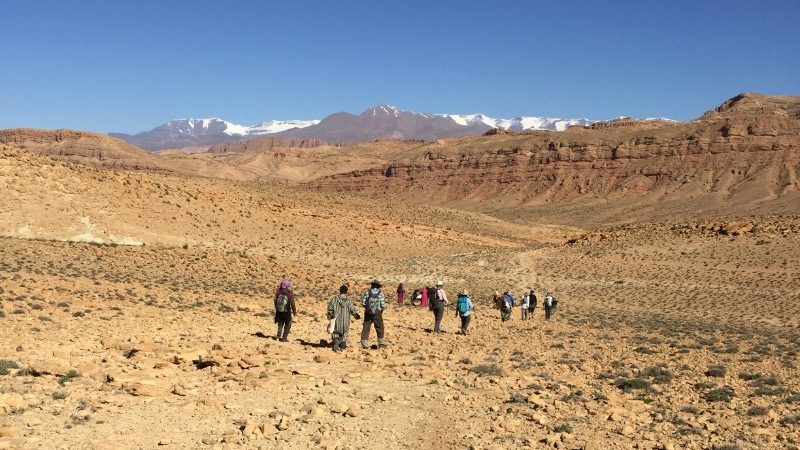
Day two trekking
In the lead-up to the trip, I had laid out my duffel contents on a coffee table back at home, adding and subtracting the vital and frivolous contents. Most valuable items: broken-in hiking boots with wool socks, wet wipes, hand sanitizer, trekking poles, solar charger, journal. We were each allowed a duffel bag (40 pounds/18 kilograms max) and had purchased drinking water along the way. There would be no water available for bathing or showers.
Meeting our Berber family
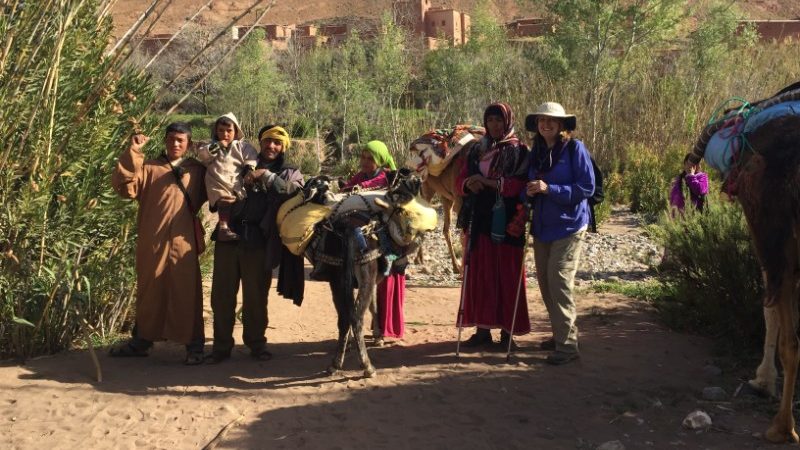
Linda with the family
Our Berber family was waiting for us across the plain, at a location with smoke-darkened caves that had been hand-carved into the banks by nomads hundreds of years ago.
A cook, as well as a contracted team of three men to transport our tents and gear on mules, rounded out our group.
The animals consisted of three adult camels (one of them very pregnant, and no – darn it – she didn’t give birth that week), three mules, four donkeys, 53 goats, eight baby goats, 120 sheep, and two chickens. The baby goats tolerated being tucked into blanket pockets on the back of a donkey every morning, with the two chickens decorating the top of the blanket pile like the bride and groom on a wedding cake.
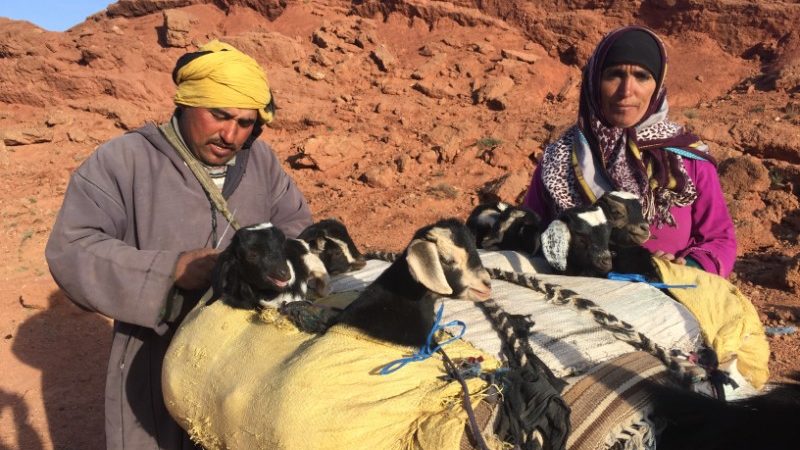
Loading the baby goats onto the donkey
After dinner in the cave, we retired to our tents and fell asleep listening to the murmur of animals around us.
At dawn, we were awakened by a symphony of cellphones, with a chorus of goats and sheep. I hustled into my clothes, laced up my boots and sprang from my tent to greet the day. Watching the low rays of the sun swim over each hill until we were all bathed in its rosy warmth never got old.
Not-so-typical days
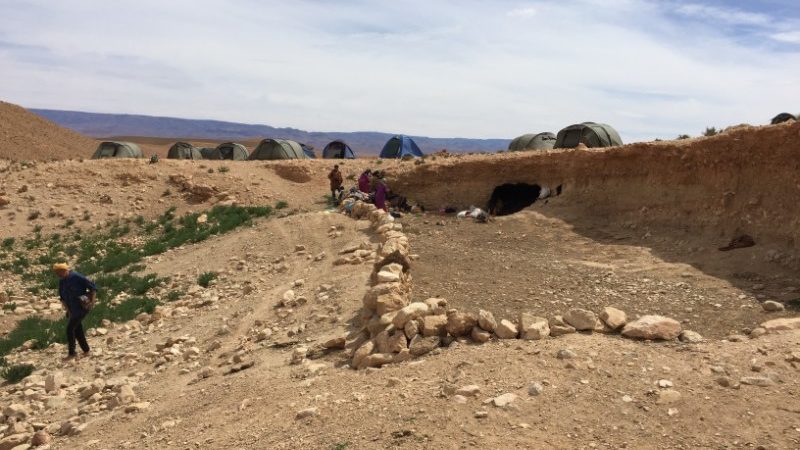
Camping
Each day had a similar routine, except for the days when they didn’t. Yes, pleasant surprises were frequent, but the common denominator was the same relaxed pattern.
- Rise and shine, use privy (a hole dug in the ground with a canvas privacy stall around it)
- Pack up, take down tent, refill our water bottles
- Eat breakfast
- Hike for a couple of hours, enjoy a 15-minute break with a snack of tangerines, nuts and cookies
- Continue hiking to the night’s campsite.
- Enjoy the lunch that awaited us in a cave lined with rugs and our sleeping mats.
- Rest for the afternoon in our tents or communally in a cave, write in our journals, or explore.
- Meet for dinner in a cave around an oil lantern. Share stories and comradery.
- Before or after dinner, join the nomads for singing, dancing and drumming.
What did we talk about? Everything (except politics!)
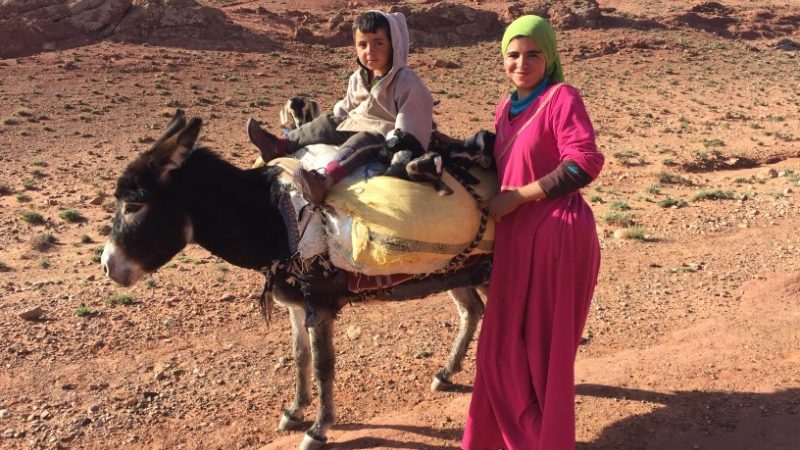
All the kids
When you’re traveling with strangers, you don’t have the same reservations about being judged, so you tend be more frank. In the group, we rarely spoke about ourselves; this was about cultural immersion and we wanted to learn as much as we could about the nomadic lifestyle.
I found that the conversations I had were about comparing travel destinations, discussing religious philosophy, and asking Abdellah questions about everything under the Moroccan sun: halal vs. non-halal, education, solar energy in Morocco… Abdellah frequently addressed us on topics related to our passage: farming, crops, exports, irrigation, the structure of village politics, cemeteries and burial customs – anything we saw that caught our interest. Other times, we walked along alone with our thoughts, the rhythm of our footsteps the only sound.
RELATED: WANT TO HIKE THROUGH MOROCCO WITH A BERBER FAMILY? YOU WILL ONCE YOU SEE THIS
Life on the trail
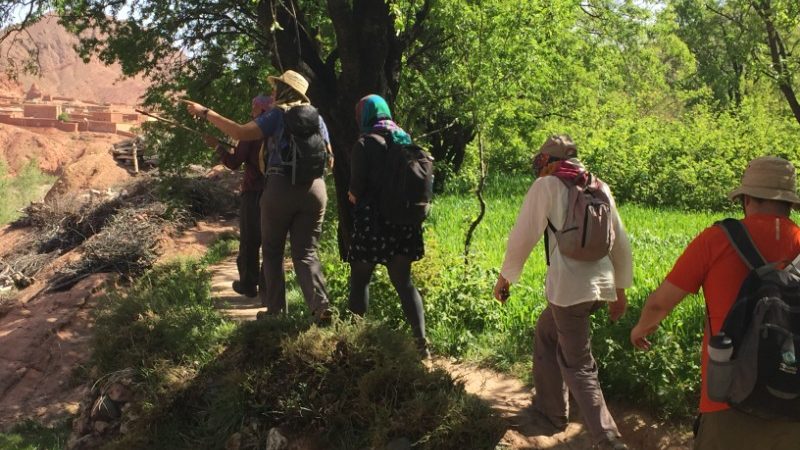
Walking to the kasbah
The nomads follow the old caravan routes, so our trek eventually brought us to some of the original 1000-year-old kasbahs (walled towns) in the mountains. The family herded the animals around their perimeter, while we passed through two villages. We saw the architecture and gardens up close, and stopped for tea at a B&B. Fresh mint tea was a ritual at every meal, the silver teapot held high while pouring into traditional glasses, with lots of Moroccan lump sugar.
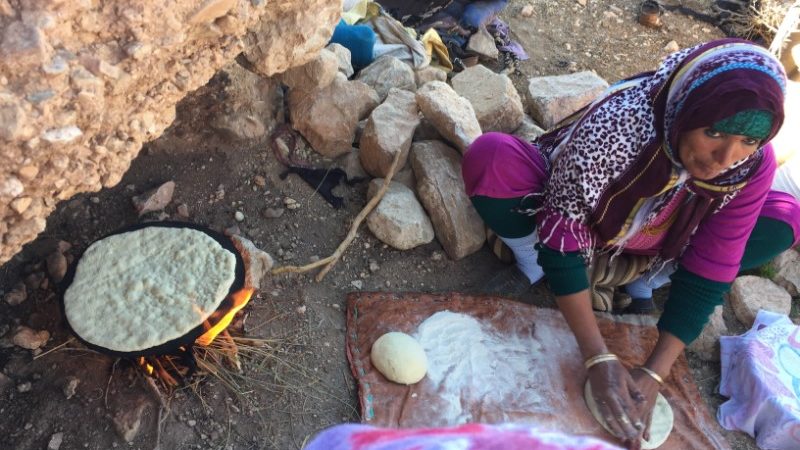
Fatima preparing flatbreads
Fatima shared her daily tasks, teaching us a variety of skills, from flatbread baking over the fire, to goat milking at dawn. She even applied kohl to our eyes and organized a mock Berber wedding, selecting the ‘bride’ from our group, while the cook served as ‘groom’. The wedding took place on our last night in camp, a celebration of singing and dancing that coincided with reaching the nomads’ summer location.
Returning to Marrakech
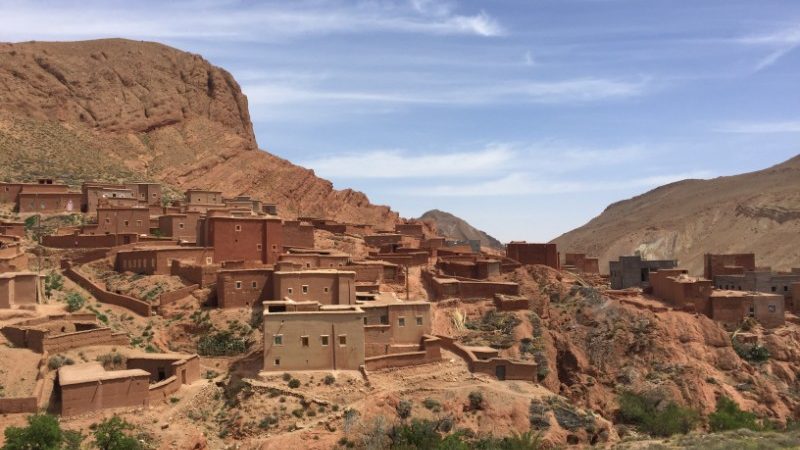
Arriving at the kasbah
The following morning we expressed our heartfelt thanks to the family for being such kind hosts, and so generous in sharing their culture with us. We passed along items from our gear that we thought they might be able to use. I contributed my trusty roll of duct tape. Never has it been put to better use.
After many hugs and shukran’s (thank you’s), we reluctantly lifted our backpacks for our last hike as a group.
Just before rounding a bend in the trail, I turned back for one last look at the scene of camp activity in the distance. Generations of nomads have repeated this tradition annually, but for how much longer, I wondered.
After we split up at the hotel in Marrakech, I spent a couple extra days unwinding in the city, eating ice cream, getting a hammam (traditional scrub-down, bath and massage), and exploring the Djemma el Fna Square. But that’s a story for another day.
Interested in learning how to make flatbread, bundling up baby goats onto the back of a donkey, and really immersing yourself in Berber life? Join us on our Moroccan Walking with Berber Nomads expedition now.
 Feature image by Ryan Bolton. All other images by Linda Summersea.
Feature image by Ryan Bolton. All other images by Linda Summersea.

